Do you recognise these retro home gadgets of yesteryear?
Nostalgic items that have fallen out of fashion
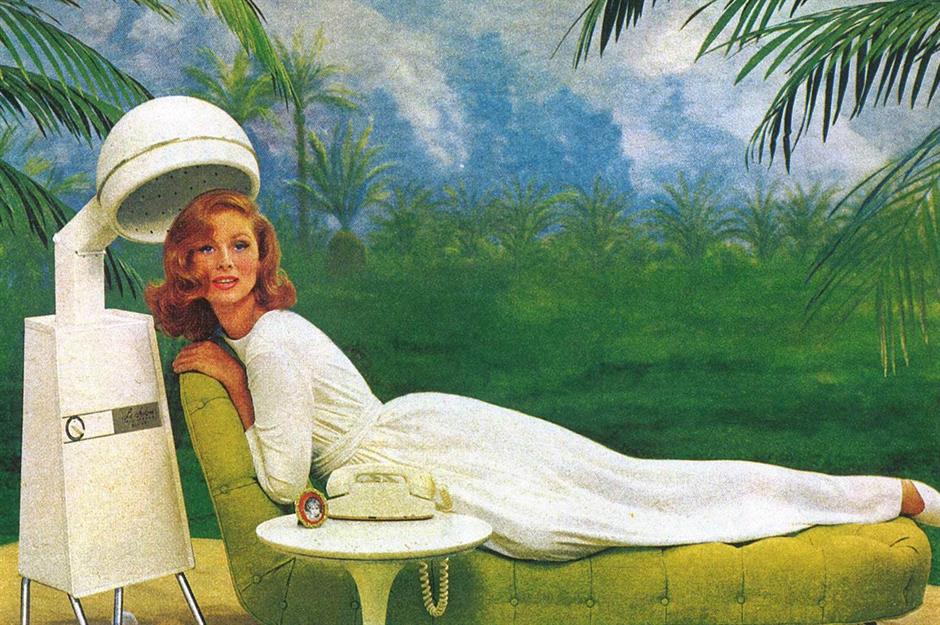
Technology moves fast and things we once thought we needed for our home and lifestyle are now obsolete. Some may even be unrecognisable to the current generation or you may still have these items in the attic or hidden away at the back of the cupboard for posterity’s sake – or more likely because you’ve just forgotten about them!
Click or scroll to take a journey down memory lane to see how many of these retro tools and home gadgets you remember...
Is this a retro game?
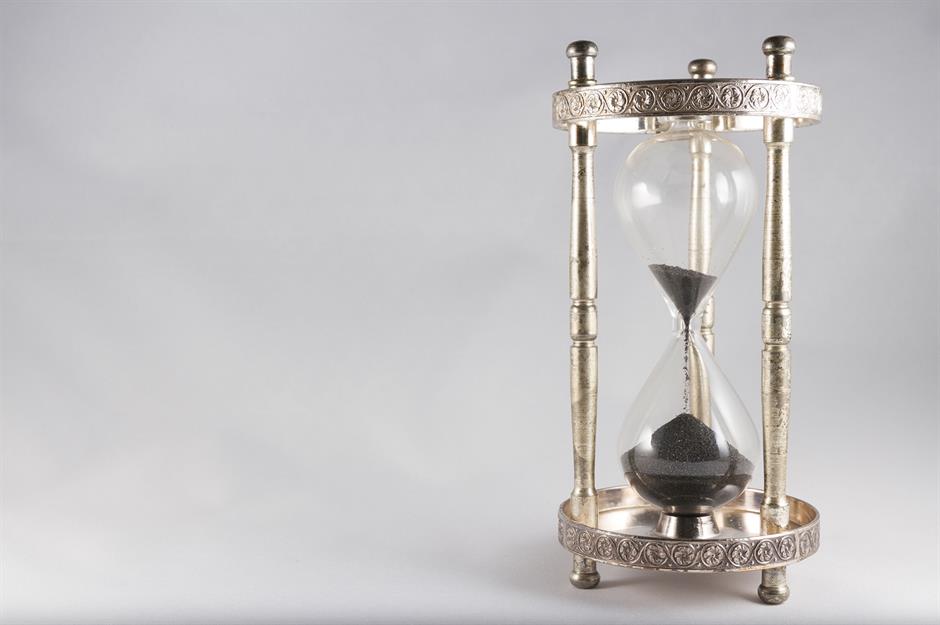
Timekeeping has been a key part of human civilisation since, well, time began! Before smartphones and even wristwatches, the hourglass – or sand timer – was a simple way of measuring a specific amount of time.
Thought to date back to ancient Egypt, hourglasses have been used as timers for maritime use, cooking and to measure the duration of lectures. The amount of sand that drains between the glass bulbs – and therefore the size of the hourglass – corresponds to the time passed. When the top vessel is empty, the time is up!
Could this be a medieval stretching device?
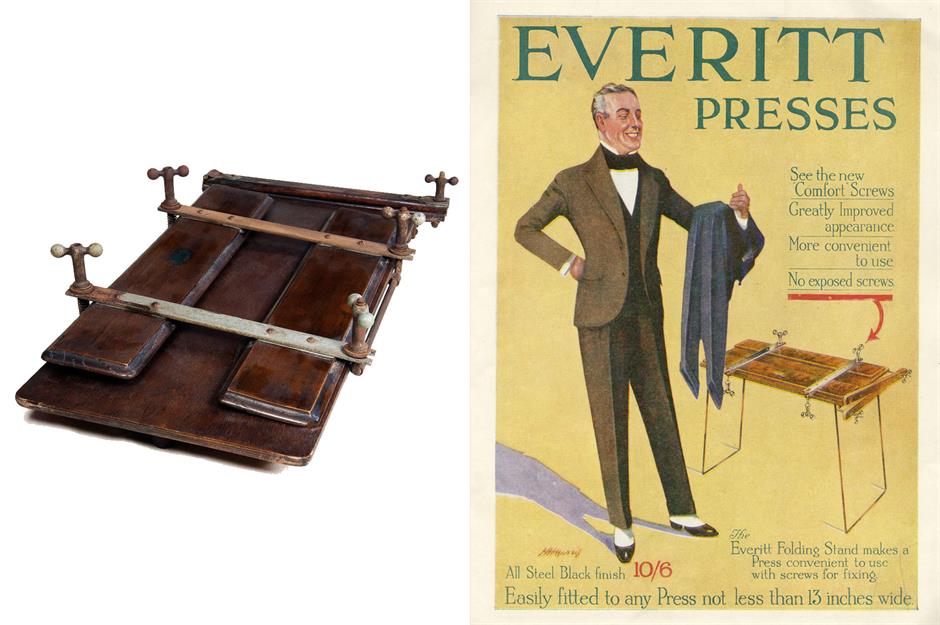
Do not adjust your screens. This isn't a sinister medieval instrument but a gadget once beloved by travelling businessmen and women around the world.
This rather cumbersome wood and steel item would be taken on the road during the early 20th century to remove creases from trousers. The design preceded British inventor Peter Corby's 1960s electrical version, which can still be found in traditional hotels today.
Who played these bells?
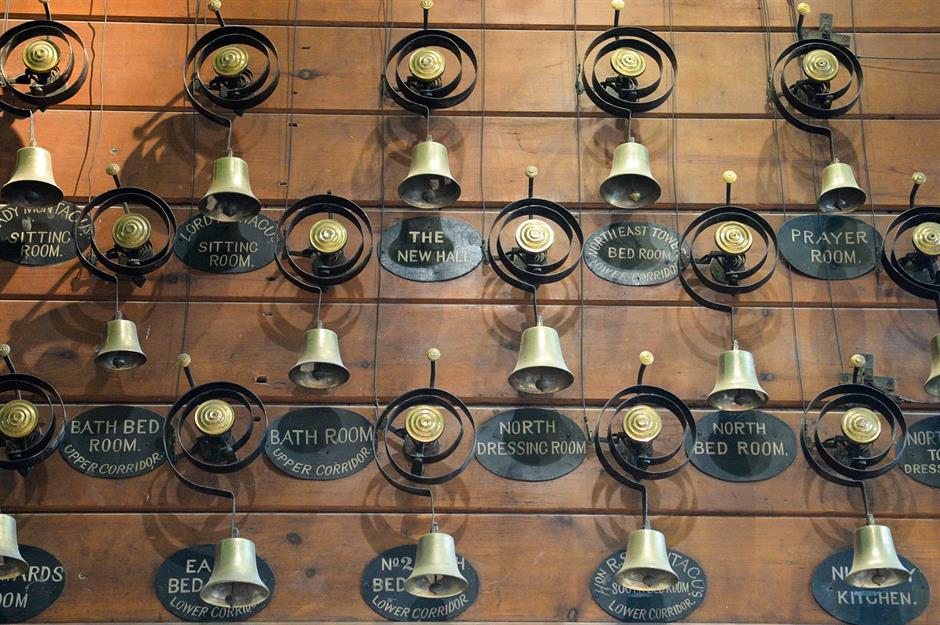
Unless you are part of the landed gentry, it’s unlikely you ever had maid bell pulls in your own home, but you will probably recognise them from watching period dramas such as Downton Abbey or Poirot.
In the days before mobile phones or even intercoms, bell pulls were the main mode of communication within historic houses. Each bell corresponded to a different room of the house and was connected to a convoluted system of pulls and levers used to summon staff from their quarters. "You rang, ma'am?"
What do you call these portable chimneys?
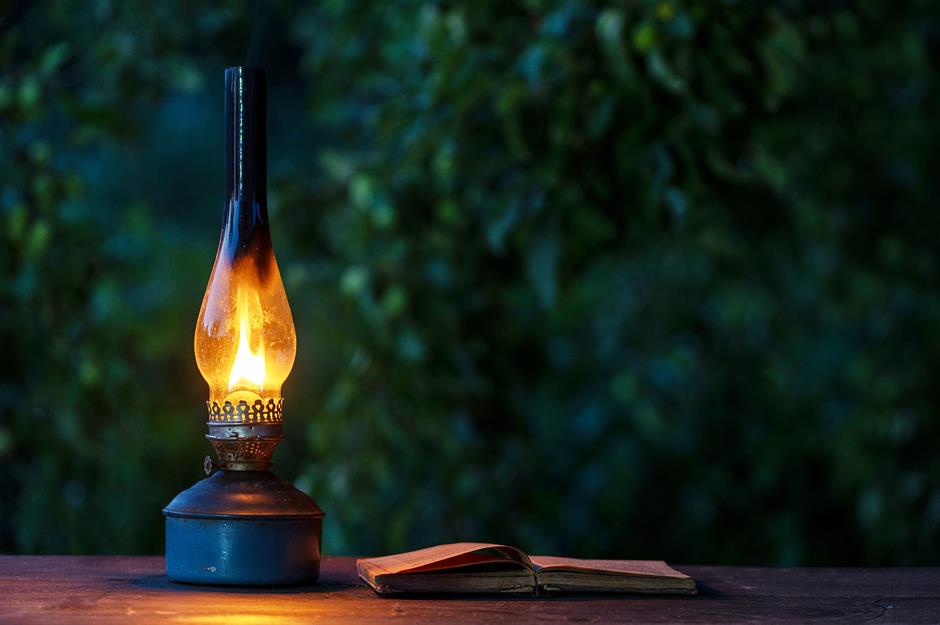
While these 19th-century lights may look romantic, in terms of health and safety, they were a nightmare! Fuelled by kerosene oil, paraffin lamps – as they're sometimes also known – came with a wick or mantle and a glass chimney to protect the flame.
Invented by Polish inventor Ignacy Łukasiewicz in 1853, they were very useful in homes before electricity or for those who then wanted to limit the energy they used, especially those in more rural areas. Today, of course, they are a bit of a fire hazard, not to mention not very environmentally friendly. However, modern electric versions are available.
A wonky display shelf? What do these do?

Modern cooks – especially bakers – who like precision should be very grateful for digital scales. Back in the day, no such thing existed and cooks had to do things the old-fashioned way – using manual kitchen scales like these.
It's thought that balance scales go back as far as the Ancient Egyptians and have continued to develop ever since. These mechanical kitchen scales would require spending time balancing your ingredients on one side against metal weights on the other side until the pair were perfectly equal. Talk about effort!
What would you use this winding gadget for?
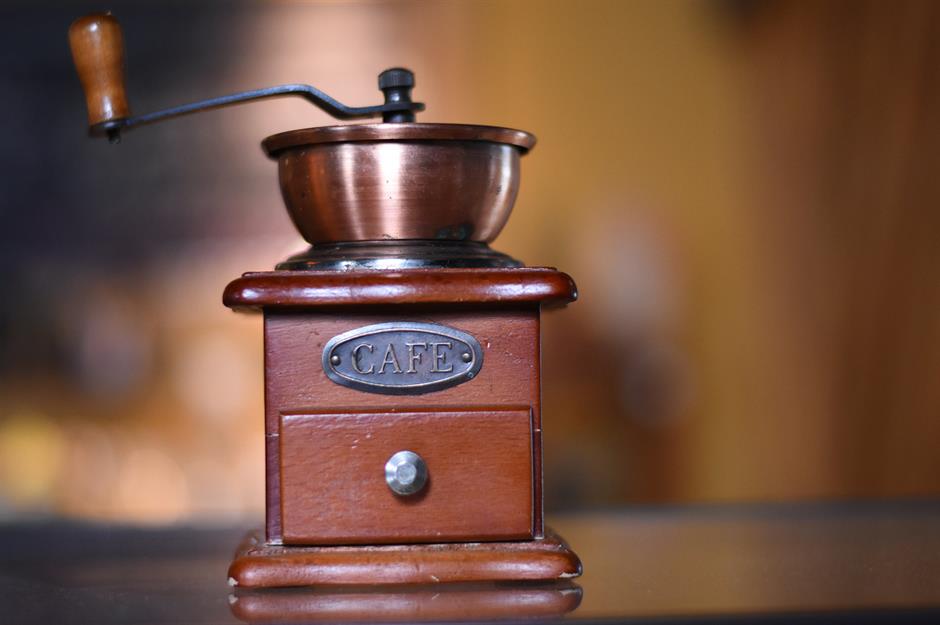
They may seem like a mainstay of every high street but once upon a time, coffee shops were a rarity, as was pre-ground coffee. The caffeinated drink we all know and love didn't come to Europe until the 17th century and it was favoured in America above tea by the mid-to-late 1700s.
Those who required a morning coffee had to use one of these nifty wooden mills invented by Englishman Nicholas Book. The beans were placed in the top of the lever device and ground into a bottom drawer before starting the brewing process. A labour of love indeed.
Is this gizmo used by hypnotists?
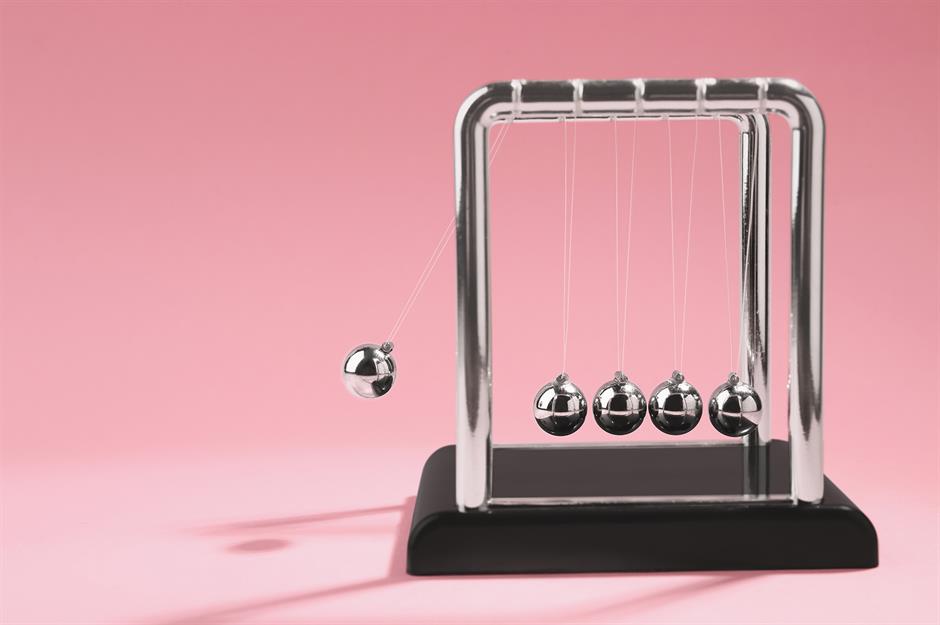
At one point in the 1970s, this intriguing little item was seen as the height of sophistication. Known as Newton’s Cradle, five steel balls hang from a pendulum structure to demonstrate the 17th-century scientist Isaac Newton's physics law the 'third law of motion'. It suggested that the home occupiers had a certain level of intellect.
Indeed, the desktop prop became so fashionable that Concorde began to give it out to passengers as they boarded to while away the time, so their flights seemed even faster than they were.
Are these wooden bagpipes, perhaps?
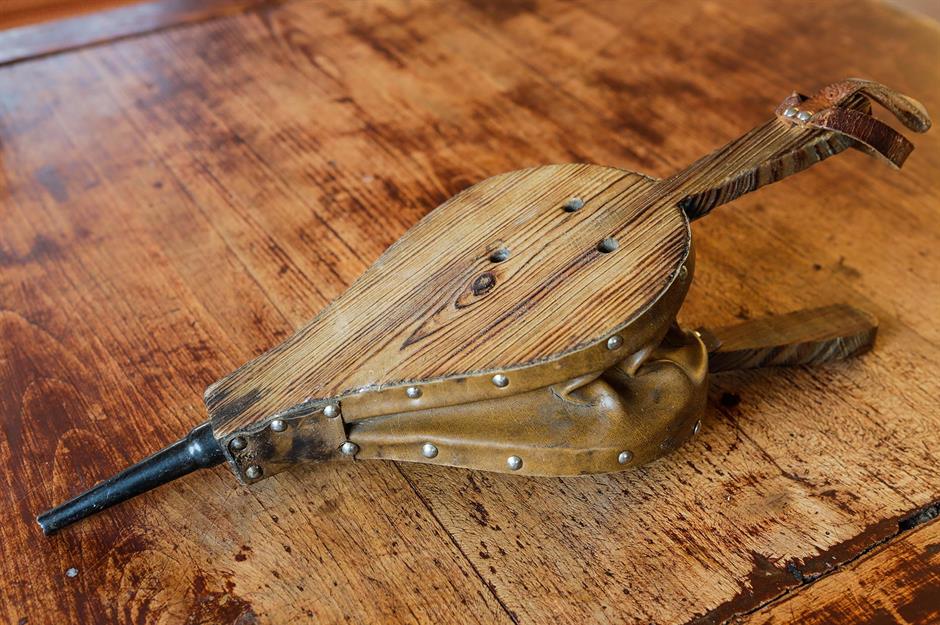
No, this is not some kind of musical instrument but a set of fireside bellows, a handy gadget designed to keep your fire burning. Blowing air onto the flames through its nozzle was seen as an easy way of stoking a fire or getting one started in the grate.
Regularly used since medieval times, they have gradually fallen out of favour as few modern homes have open fireplaces. However, they are still available to buy if you fancy recreating a traditional fireside scene.
Was this utilised for discipline reinforcement?
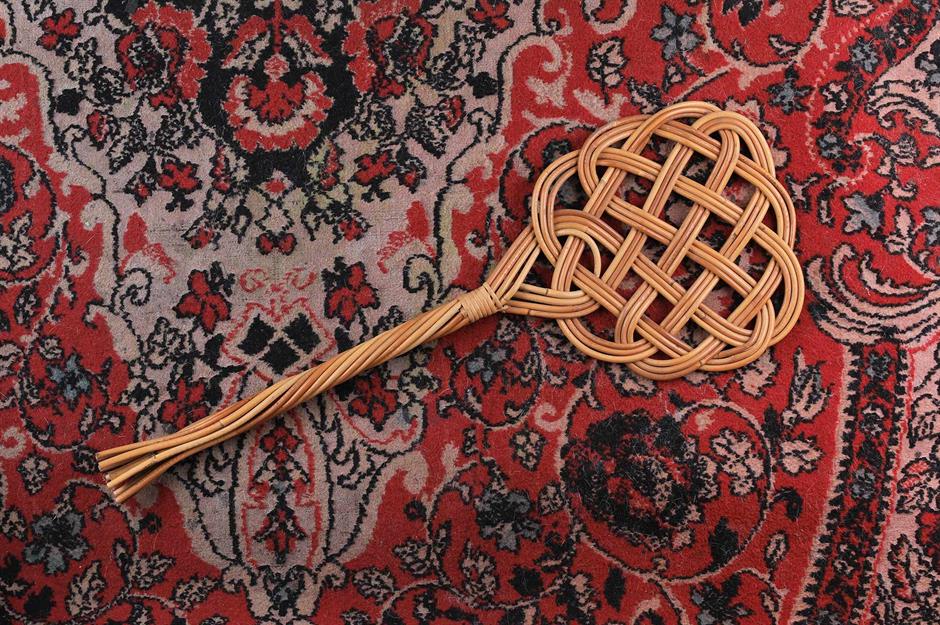
It may be hard to believe, but it wasn't until the 1950s that most homes began being fitted with carpets. Until then, bare wooden floors were common with rugs added to create more warmth.
As we all know, rugs pick up a lot of dust. But before vacuum cleaners were a household staple, the best way to get rid of dirt was to take your rug outside and give it a good bashing with a carpet beater like this one. They were usually made from twisted cane in an ornate design and antique versions have become collectable due to their aesthetic beauty and craftsmanship.
Is this a futuristic alarm clock?
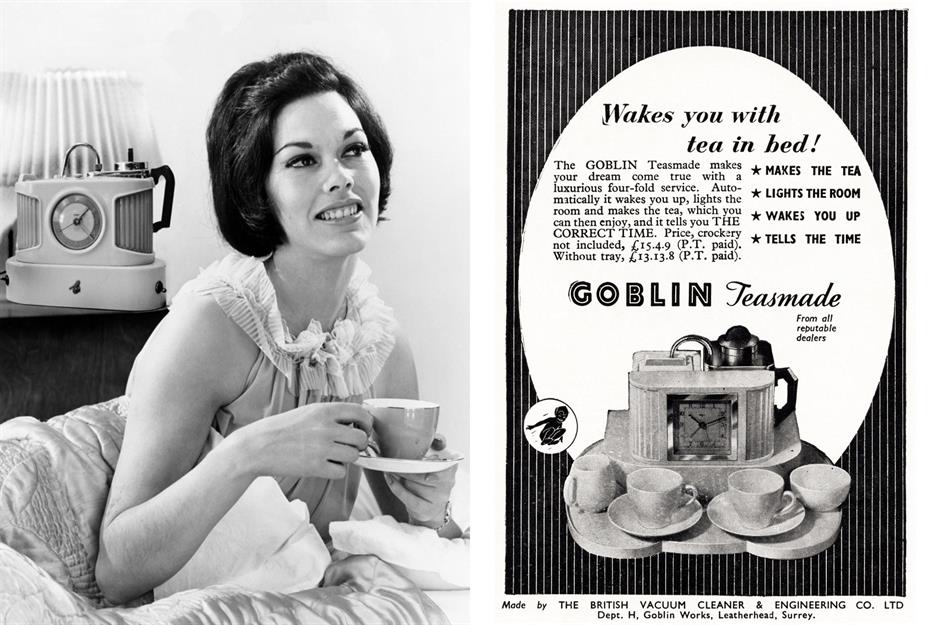
Back in the 1960s and 70s, this odd contraption was a popular item found on bedside tables across Britain and the Commonwealth. Feeding into the stereotype of a tea-loving nation, the time-saving teasmade included a morning alarm that would then make a cup of tea without the owner getting out of bed! Basic tea makers were available as far back as Victorian times, but the first electric Teesmade machine was first marketed in the 1930s.
We're not sure why they well of fashion – or where people kept the milk overnight – but we still think it’s a gadget worth reviving around the world.
Did someone really bathe in here?
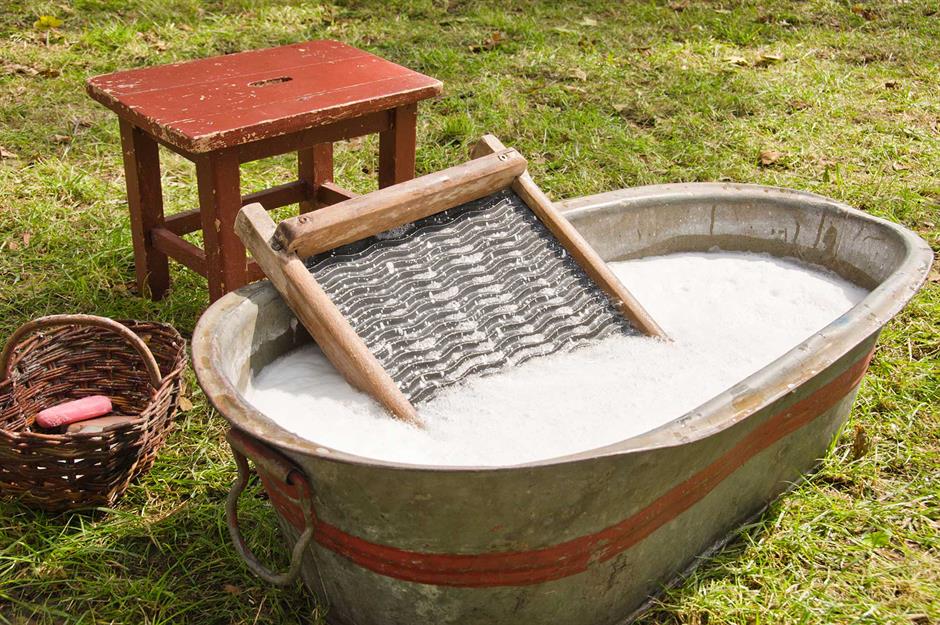
Next time you moan about your pile of laundry, spare a moment for past generations who had to wash their clothes using one of these contraptions. Before washing machines, people – usually women – were tasked with scrubbing dirt and stains against a board with a set of ridges and grooves over a trough of water.
The wood and metal washboard was the main method of laundering clothes until the first drum-based washing machine was invented in 1851.
What did this machine stretch?
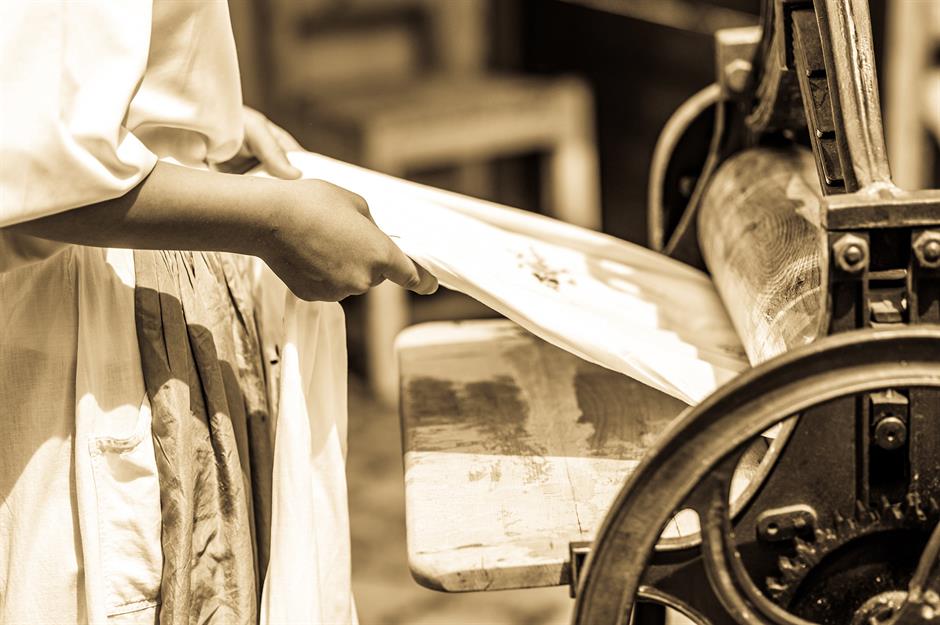
And once all your clothes were clean and your arms were achy, well what then? Before electric dryers, the humble mangle was the only option for smoothing and drying fabric.
Used since the mid-15th century, items would be passed through wooden rollers on a cast iron frame to squeeze out excess water before hanging them out to dry. Screws allowed the space between the rollers to be adjusted according to the thickness of the material to allow for items such as drapes or bed linen.
Could this be an ancient battle shield?
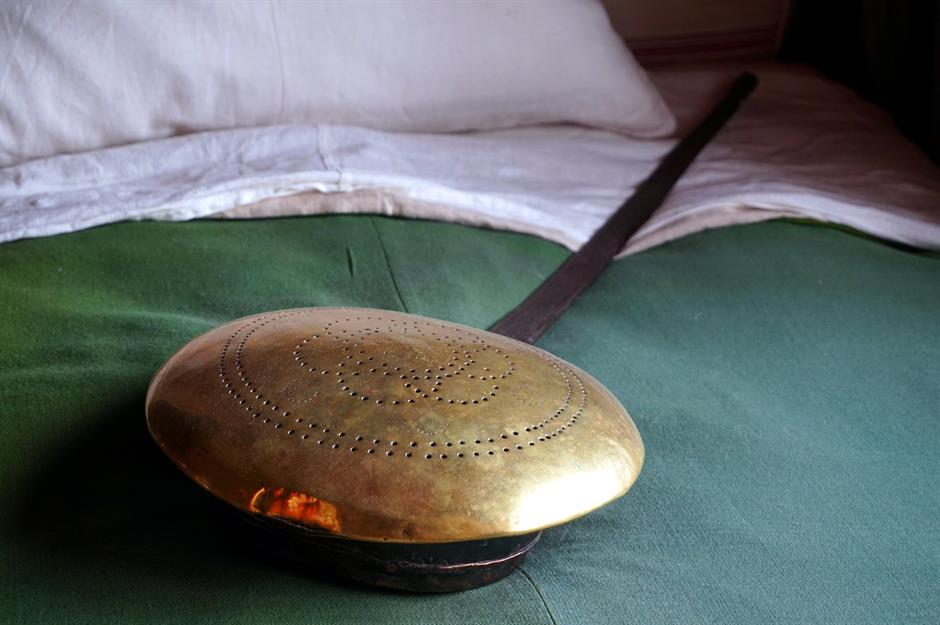
Before many homes had central heating, people would rely on the fireplace to warm their rooms, or perhaps the range during the day. Then when it came to bedtime, to make things a little toastier, they would fill a copper or brass warming pan with embers from the fire and sit it in the bed to heat it – hopefully remembering to remove it before they climbed in!
It’s not quite as appealing as the soft cover of our hot water bottle today – and a fair bit more dangerous – but we imagine it still did the trick, nevertheless.
Where would you find these miniature railings?
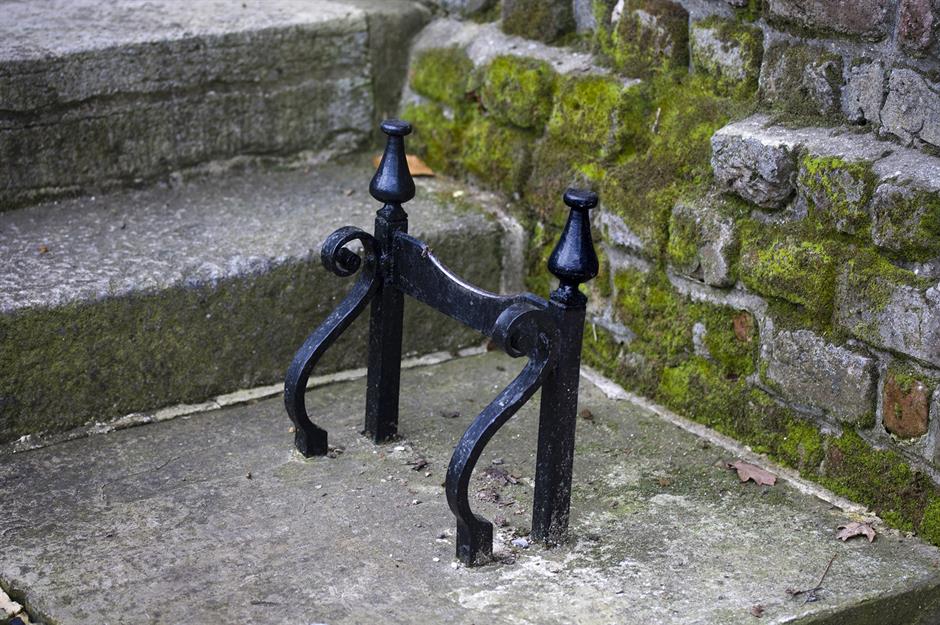
Have you ever wondered what these cast iron things are that you find outside a lot of period properties? Rather than walking the outside dirt into your home, you would stop at one of these boot scarpers before entering and get as much muck off the bottom of your shoes as you could. They became popular in major cities around the world during the 17th century and many elaborate designs were created despite their mundane use.
Not quite as thorough as taking your shoes off entirely, but in the days before carpets it was probably sufficient.
What do you call this ornate proding device?
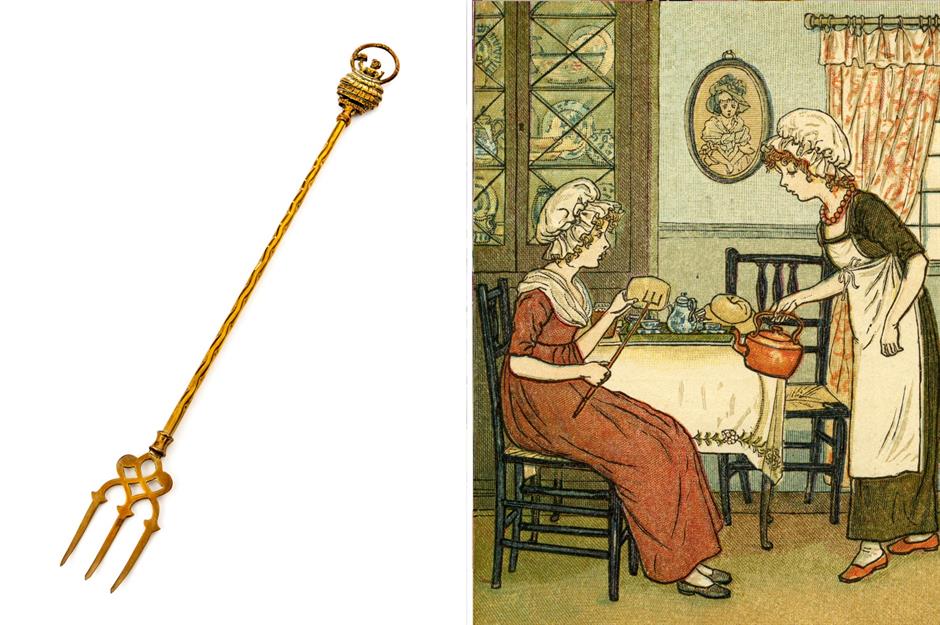
Forget your modern toasters that can be programmed to make the perfect slice each time. For many centuries, toasting bread was an activity that required patience and lots of trial and error.
Slices of bread – or whatever required toasting – would be speared onto this long-handled fork and waved precariously near the open flames of the fireplace until it was perfectly browned – or charred to a crisp! The first electric model didn't appear until the start of the 20th century.
What does this key do?
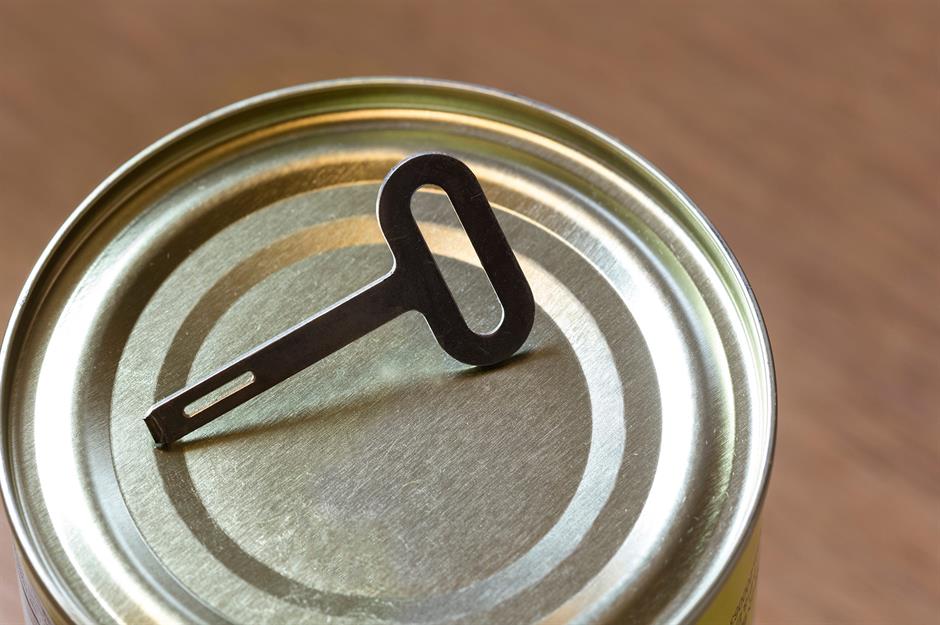
This may look like a conundrum to solve but it is indeed an old-fashioned tin opener. Known as a can opener key, it came provided with certain tins – usually meat or fish – that had a rectangular top. The design was patented in America by J Osterhoudt in 1866 before a general-purpose solution was created and can types were later standardised.
To use, you would lift the key off, place it vertically by the side of the metal tab on the side of the can, and feed the tab through the gap in the key. Once the tab was through, you would turn the key over, and over, pulling more of the metal tab with you as you went, until the top of the can became separated.
What is this kitchen contraption?
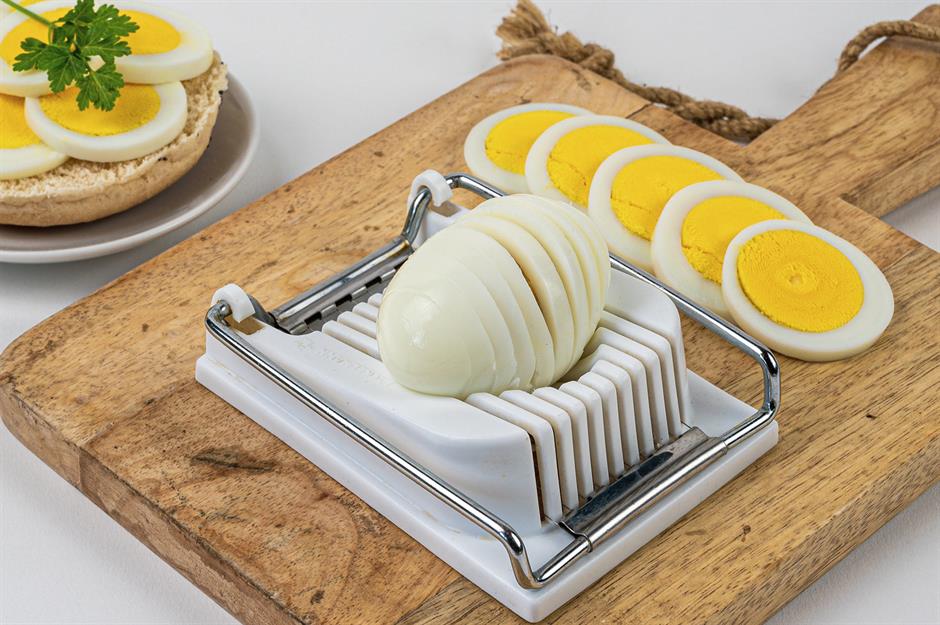
Though the egg slicer has been around since the early 20th century and is a versatile cutting tool, you don’t see it in many kitchens today. Comprising some form of solid base and taut metal wires, it can be used to slice hard-boiled eggs nicely for salad without marking the egg white, but they are also great for cutting fruit such as strawberries. We might start a campaign to bring these back to our kitchens.
An astronaut's helmet, maybe?
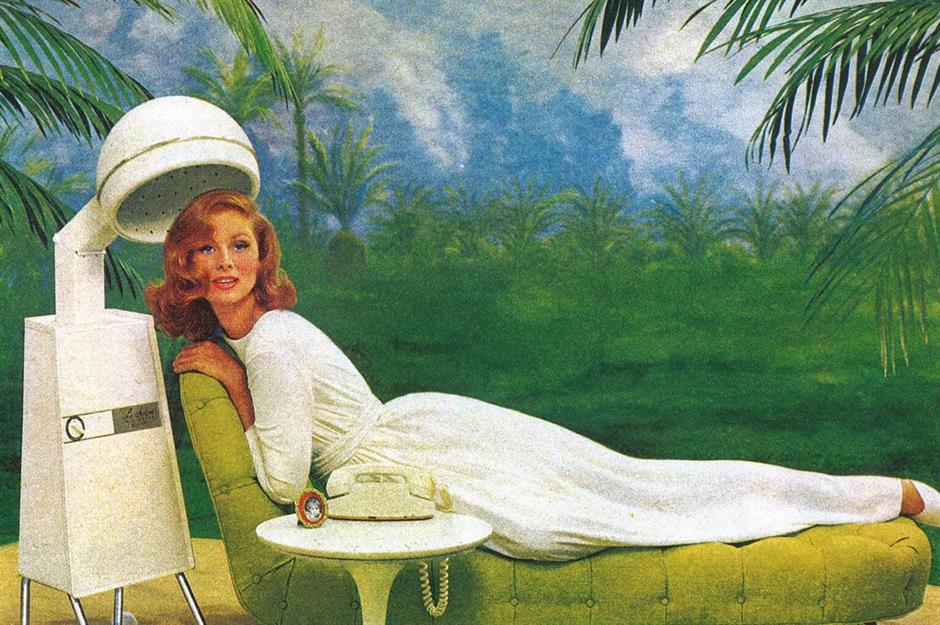
Today, we have a whole marketplace of hairdryers that we can take anywhere and work in next to no time. However, back in 1963, when this advert for Schick was released, ladies had to either make time for the salon or invest in a machine like this, in which they would sit beneath a plastic bonnet with hot air circulating inside and wait for their style to 'set'.
The first seated dryer was invented by French stylist Alexandre Godefroy in 1888, however, the UFO-looking hood dryer synonymous with vintage styling didn't appear in salons until the 1930s.
Was this a pocket weapon?
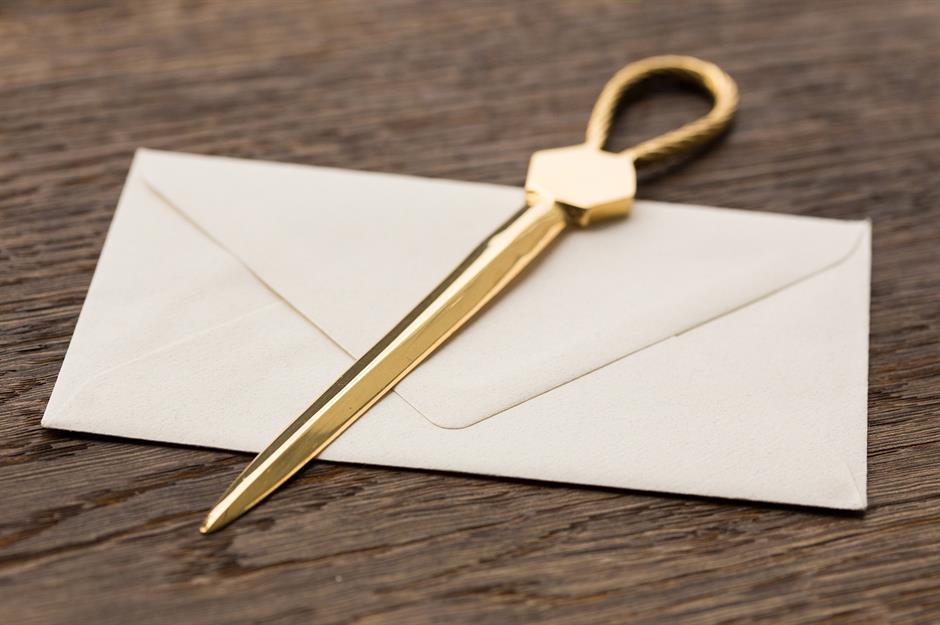
Letter-writing was once the main form of communication and the postman's arrival each morning was an exciting prospect. However, we mere mortals couldn't be expected to open the envelopes with our fingers – just think of the paper cuts!
Paper knives date back to the 1700s. By the mid-1800s, the letter opener (longer and blunter) was an essential desk accessory following the invention of flat-rate postal services in Europe and America. In upper-class households, they were often ornate with a family crest and made from exotic materials like tortoiseshell and mother of pearl.
Who wore this finger adornment?

We’re big fans of mending and making do but we often wish we were as sensible as our forebears and had one of these thimbles to hand when sewing to avoid painful pinpricks. Once a safety tool used religiously by those who had been properly taught to hand sew to prevent injury when pushing a needle through thick fabric, today it's left out of many sewing boxes and it seems a real shame. Despite this, ornate antique versions are still highly collectable.
Could this be a historic metal tankard?
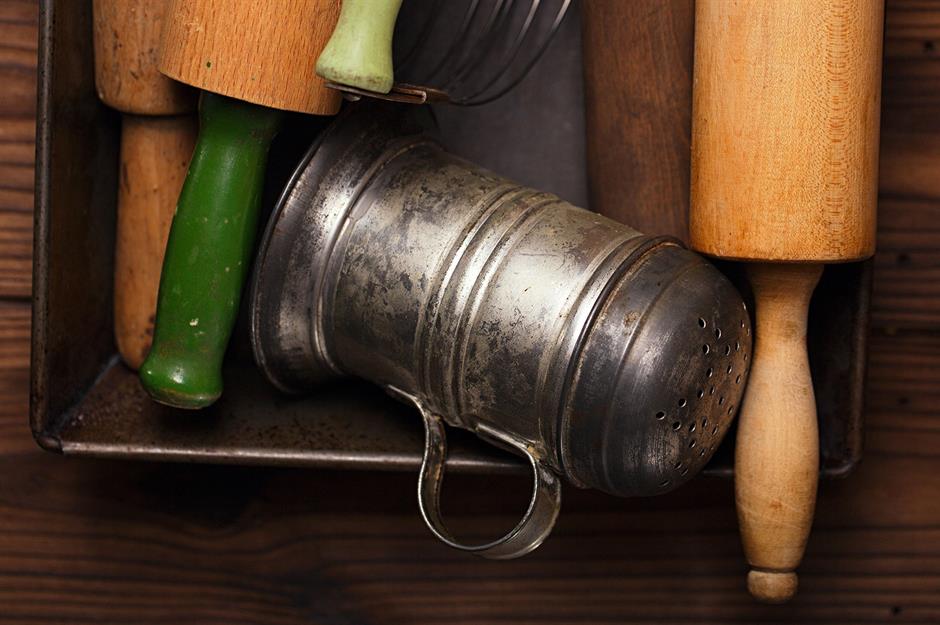
One gadget that can still be found on kitchen shelves, if only as part of a vintage display, is a flour shaker like this one. Initially made from utilitarian metal, in the 1950s and 60s brands such as Tala started making colourful bakeware to appeal to style-conscious housewives.
Ideal for when you want to add just a little bit more flour to your surface when rolling out dough without making too much mess, it's such a simple idea it's crazy that not everyone uses one today.
Where was this used in the home?
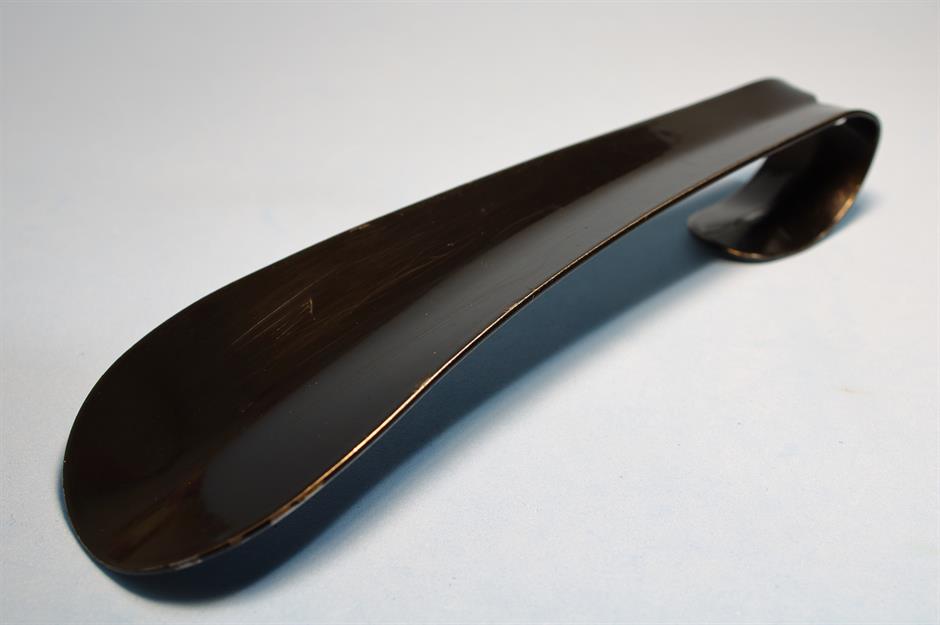
The origins of this bizarre device seem to be unknown, however, reports suggest that shoehorns have been around since the late Middle Ages. In addition, England's Queen Elizabeth I is thought to have had quite a collection. Used to lever the back of a shoe onto the foot, they were made of anything from metal and wood to bone and animal horn.
Today, shoehorns are still widely available but tend to be favoured by the older generations and are usually made from plastic or metal. They also come in a variety of lengths from extra long to travel-sized.
Who owned these fancy tweezers?
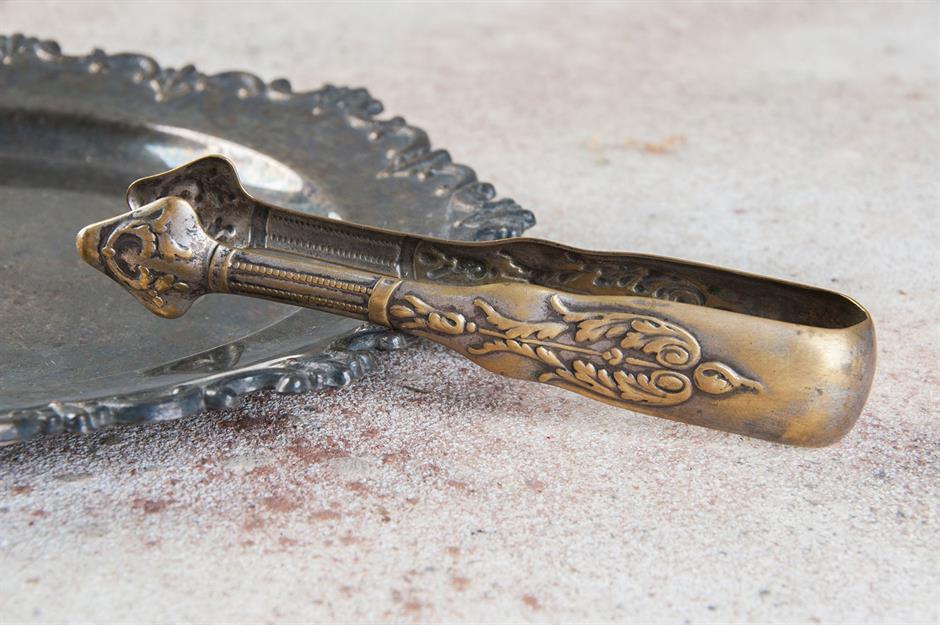
For as long as tea has been consumed in the Western world, it has been sweetened with sugar. But of course, it was bad manners to pluck cubes with your fingers and so by the early 18th century, sugar tongs were a standard part of tea set equipment.
Initially, sugar tongs were modelled on fire tongs with slender arms and curved ends and were usually made of silver. Today, we're more used to little paper sachets or simply a jar and teaspoon.
Is this a regular musical instrument?
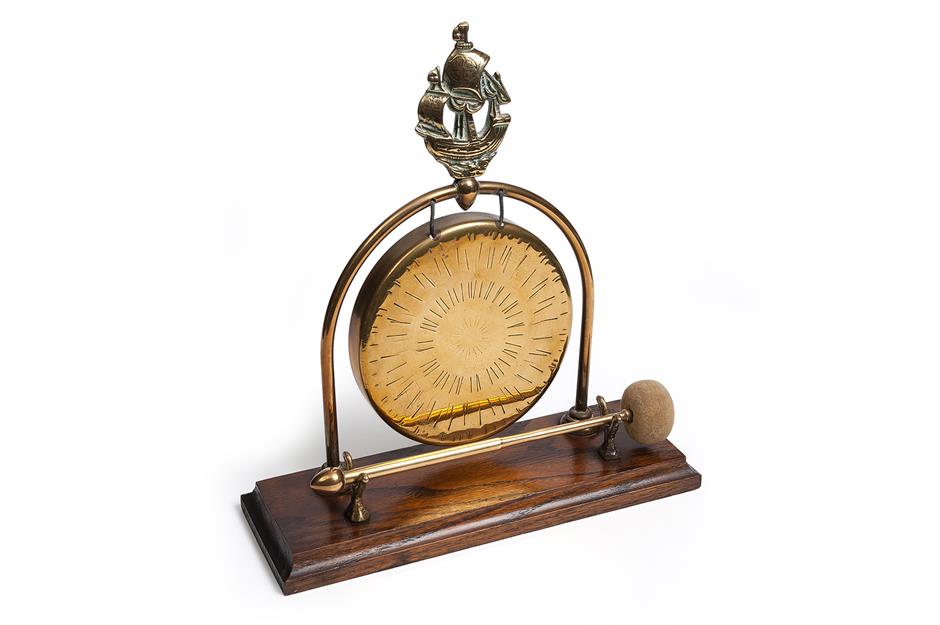
While its origins lie in the musical traditions of Southeast Asia, this percussion instrument was actually a staple of middle- and upper-class Victorian and Edwardian households. Servants of wealthy families or hotel employees would sound the dinner gong to signal daily activities such as dressing or, as the name suggests, serving a meal.
A symbol of colonialism and international trade, gongs were brought from Asia as a communication tool due to their deafening noise that could travel throughout large households. Ideal for Victorian culture, which was obsessed with etiquette and punctuality.
Loved this? Take a look at more retro homeware and nostalgic interiors
Comments
Be the first to comment
Do you want to comment on this article? You need to be signed in for this feature